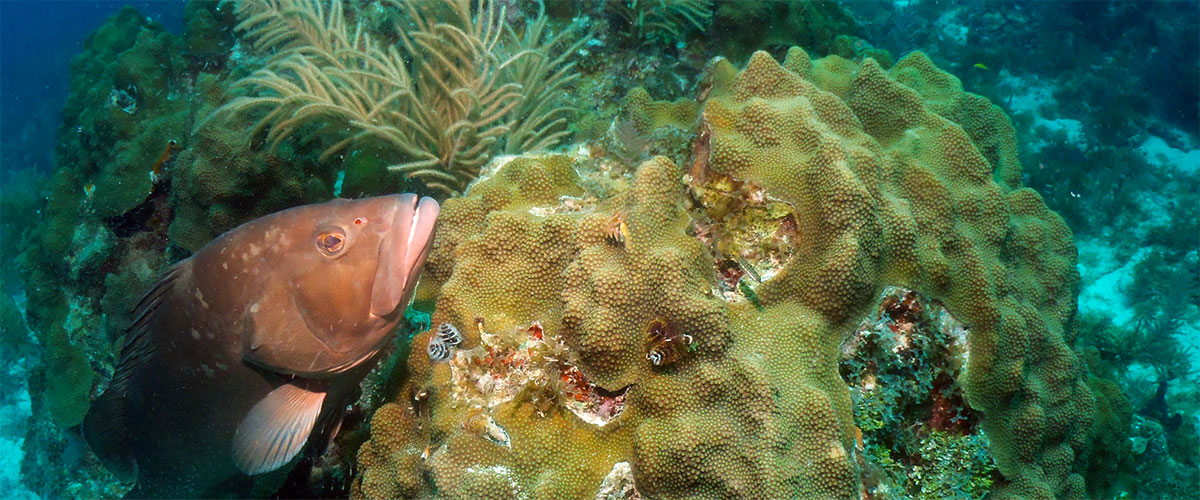Marine Zoning/Marine Reserves

The use of marine zoning in National Marine Sanctuaries began in the FKNMS. In 1997, the FKNMS implemented 22 Sanctuary Preservation Areas (SPAs) and one Ecological Reserve (ER), the Sambos ER. In 2001, the Tortugas ER went into affect following a two-year public process to design the boundary alternative. At the time of the establishment of the Tortugas ER, it was the largest marine reserve established in the U.S.
SPAs and ERs are no-take areas. Most of the world has adopted the terminology of “marine reserves” for no-take areas in the marine environment to distinguish them from other marine protected areas (MPAs). In general, MPAs may allow various take activities. Our National Marine Sanctuaries are all classified as MPAs, but only a few have marine reserves and they are a small percent of the total area of any Sanctuary.
Of the 22 SPAs in the FKNMS, four are research only and serve as control sites for scientific research. The other 18 allow non-consumptive recreation activities such as snorkeling, SCUBA diving and glass-bottom boat rides. In fact, the major objective of the SPAs was to resolve conflicts between consumptive and non-consumptive users. The SPAs are generally small in size and scientists do not believe they will provide wider ecosystem protection benefits. But, the protected sites have changed enhancing resource attributes people engaging in non-consumptive recreation value.
The major objective of ERs is ecosystem protection and therefore they are much larger in size than the SPAs. The Sambos ER is nine nautical square miles and the Tortugas ER is broken up into two non-contiguous areas: Tortugas North and Tortugas South. Tortugas North is a 91 nautical square mile area, which is adjacent to the Dry Tortugas National Park (DTNP). DTNP created a Resource Natural Area, which is a no-take area, adjacent to Tortugas North. The Resource Natural Area is approximately 40 nautical square miles. Non-consumptive recreation activities are allowed in Tortugas North and the DTNP Resource Natural Area. Tortugas South is a 60 nautical square mile area around an oceanographic feature called Riley’s Hump, which is a known spawning site for reef fish. Tortugas South is a research only area.
Marine reserves are only one form of marine zoning. Again, the FKNMS has led the way in using the broader concept of marine zoning. FKNMS has created seven Wildlife Management Areas (WMAs) to address conflicts between boaters and flats/backcountry fishermen who require quite conditions on the shallow flats of the Florida Keys.
Much of the efforts in socioeconomics have been focused on understanding the potential costs (negative impacts) of the marine reserves. The commercial fishing panels were set up to monitor the impacts of the SPAs and ERs on the commercial fishing industry. In the Tortugas ER – Initial Assessment, efforts were focused on estimating the potential socioeconomic impacts on commercial and recreational fishermen. Potential benefits were addressed, but the main focus was on those who were being displaced from the no-take areas. The Initial Assessment had to make projections of future impact under much uncertainty in how both commercial and recreational fishermen would change their behavior in response to displacement and how this change in behavior might result in feedbacks with responses in fish stocks. Essentially, we do not know to what extent any the projected impacts are “real”.
Following the principles of “Adaptive Management”, two subsequent efforts have been focused on pre-post assessments of what actually happened. In 2003, Thomas Murray and Associates, Inc. got a MARFIN Grant from NOAA’s Fisheries Service to address what the impact of the Tortugas ER actually was on the commercial fisheries. The report concludes that the negative impacts projected did not occur. In a follow-up effort, NOAA, National Ocean Service’s National Centers for Coastal Ocean Science (NCCOS) conducted an integrated assessment (IA) of the Tortugas ER. The Tortugas ER – IA was a five-year pre-post assessment of the ecological and socioeconomic changes comparing conditions for the five-year period before establishment of the Tortugas ER (pre) to the five-year period after establishment of the Tortugas ER. A team of over 20 physical scientists and six social scientists worked on the Tortugas ER – IA. The socioeconomic information utilized included information from the commercial fishing panels, the MARFIN report, commercial fishing data from the State of Florida’s “trip ticket database” on commercial landings and effort, and a new survey of recreational fishermen by the University of Massachusetts-Amherst, Human Dimensions of Marine and Coastal Ecosystems Program. Again, the conclusion was that the short-run negative impacts projected on both the commercial and recreational fisheries in the Initial Assessment did not occur.
Commercial Fishing Panels
(Here you will also find a paper on the impact of the Sambos ER on the commercial fisheries after the first two years of implementation. Again, the conclusion was that the projected negative impacts did not occur.)One can also find information on spatial use of the FKNMS by commercial fishers and dive operators, including the FKNMS zones, and on the knowledge, attitudes and perceptions of commercial fishers, dive operators, and environmental group members of the FKNMS zones on this web site. In addition, knowledge, attitudes and perceptions by residents and visitors on FKNMS zones will also be available from the 2007-08 recreation-tourism study.

